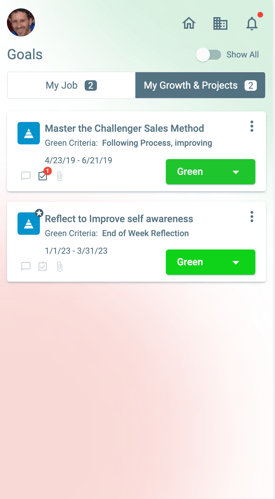We all have A-Players we do not want to lose. At the 1995 Worldwide Developers Conference, Steve Jobs shared a realization about his own top performers: “Most things in life have a dynamic range in which average to best is at most 2:1...the difference between an average software developer and the best is 50:1.” Think about the dynamic range of performance in your industry or business. It may be more or less dramatic than Apple’s, but I’m betting that you could not stand to lose the people who fall at the high end of that range.
Why You Can’t Keep People
Leaders often talk about keeping their best people, but thinking we can keep anyone is a misconception. You don’t get to keep people! They are not pets. They choose to stay with you or leave you. What you can do is love them enough so that they choose to stay with you. Nowadays, people are voting more with their hearts than with their wallets. It takes something beyond financial incentive to make people want to stay. So, what does it take?
4 Ways to Win Hearts and Minds
At Rhythm’s Breakthrough Conference in April, I shared four ways to love people and win their hearts and minds.

#1 People want to be inspired and do their best work.
We want to contribute in meaningful ways. This starts with the company’s purpose and goes way beyond just the company’s purpose. We want to know that we are contributing to achieving strategic work. We want to know that our work matters.
All leaders need to learn how to inspire their people. It’s not only the CEO’s job to excite team members to contribute and do excellent work. All leaders must create stories that make their people feel connected to something bigger. If we can connect our work to the purpose and strategy of the company, we will know that what we are doing is important.
Remember Steve Jobs’ A-Player engineers? When Apple shipped the first Macintosh computer, he had the engineers sign the inside of the computer. Wow! Why the inside? No one was ever going to see that. Jobs asserted, “Artists sign their work, and you are artists.” It did not matter if anyone saw those signatures. He wanted the engineers to think of their work as art, and artists sign their art. These engineers were inspired to be part of a computer revolution. They were inspired. I wish I had known about this earlier. If I had, I would have never sold that original Macintosh!
Employees should be able to see how their work ties to the company’s Core Values, Core Customer (the customers most likely to buy your product or service at the price and quantity required for optimal profit), Long-term Goals, and Winning Move strategies (3-5 year growth strategies to double your business).
Ask yourself the following four questions to measure how inspired your people are feeling:
- Do my employees know and love the company’s purpose?
- Do they know and are they excited about the company’s strategies?
- Do they know who and what they impact?
- Can I, as a leader, tell stories about myself and the company?
#2 People want to be mentored by good leaders.
To lead people well, you must make what is expected of them abundantly clear. Clarify their roles and goals. It is one thing to read the job description of the role you were hired to do, but it’s another to deeply understand the purpose of your role and how your results will be measured.
Another important aspect of being a good leader is being a mentor. When I worked for Oracle in 1988, professional dress was the norm except on Fridays. Fridays were designated as “casual Fridays,” and we could wear jeans to the office. As a top-performing employee, I got cocky. So I wore jeans into the office proudly one Wednesday. My manager, Greg, leaned in and had a spicy conversation with me. He asked me if I was aware of our professional dress code. Since customers visited the office regularly, he pointed out, there was a real reason for the dress code. I smiled and nodded happily, thinking that I was special, that the rules did not apply to me. Greg shared with me kindly but firmly: “Good. Now that you fully understand the importance of our dress code, if you come in wearing jeans on any day other than Friday, you will be fired. Do you clearly understand?”
I was stunned. My smile vanished. Humbled, I apologized, acknowledged the dress code, and assured him that would never happen again. Greg was the best manager I ever had. He did not yell at me. He explained and coached me. He then shared the consequences if I did not change my ways. In an instant, I leveled up and improved my attitude and behavior. Greg made me more successful by leaning in and coaching me. He coached me regularly and consistently. I believe young people today would be inspired to work for such a leader - one who is kind and courageous enough to provide coaching and input that develops us and helps us grow.
Additionally, a good leader removes people-type obstacles that are emotionally distressing. For more on this, check out my advice on addressing your elephants.
Ask yourself these questions to reflect on the strength of your leadership:
- Do I provide focus and clarity to my employees?
- Am I coaching my team to succeed?
- Do I actively remove people issues (elephants)?
#3 People want to feel equipped in their jobs.
They want to know what it takes to succeed. A leader should communicate their employees’ expected results and responsibilities - and they should make sure that their employees have the right tools and resources to succeed.
Are you equipping your people to win? Ask yourself:
- Does each of my employees know their job? Do they know their results and responsibilities?
- Are they equipped to succeed - do they have the right resources and tools?
- Do I provide feedback weekly?
#4 Finally, people want to grow.
Every employee should feel empowered to take ownership of their career and their future. They should know that their leader sees their potential and cares about their development.
Leaders should work with their reports to develop Growth Priorities. When we record these in writing, we will prioritize them more naturally. Remember: If you do not prioritize it, it is not real, so make it a top goal to execute!

Any team member using My Rhythm can see that growth is kept front and center in the tool. They can navigate to My Growth & Projects to efficiently add a new Growth Priority.
If you’re not sure that you’re prioritizing growth on your team, ask yourself these questions:
- Do my employees take tangible action for their growth?
- Do my employees believe that I care about their personal growth and development?
- Do my employees have written priorities for their growth?
There is no such thing as keeping people. People choose to stay with you, or they choose to leave you. However, when people feel inspired, mentored, and equipped, and when they know that their leader cares about their growth, they have strong reasons to choose to stay. Remember that employees are voting with their hearts, and love them in a way that makes staying with your company the obvious choice.
Photo Credit: iStock by Getty Images



 LinkedIn
LinkedIn
 Facebook
Facebook